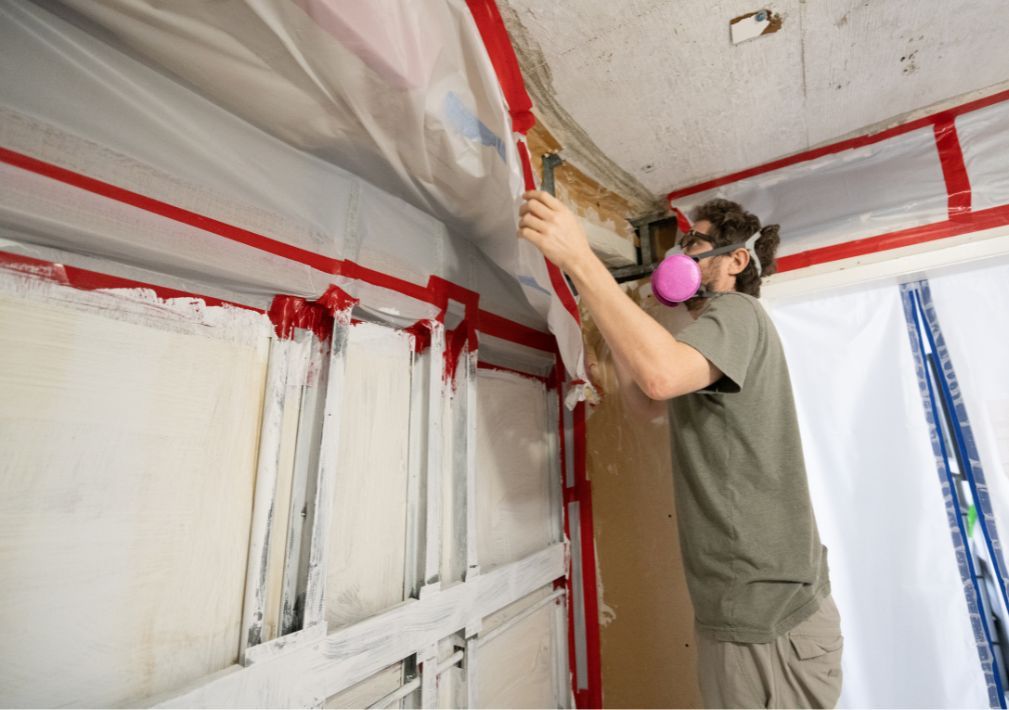5 Steps to Take When Your Property Is Damaged From a Winter Storm

Winter storms can be breathtakingly beautiful, but they can also wreak havoc on your property. The combination of heavy snow, ice, freezing temperatures, and strong winds can lead to various forms of damage, including roof leaks, frozen pipes, fallen trees, and power outages. Knowing what steps to take when your property is damaged from a winter storm is crucial to minimizing further destruction and ensuring the safety and comfort of your family. In this blog post, we’ll explore five essential steps to take in the aftermath of a winter storm.
Step 1: Ensure Safety First
Before you do anything else, prioritize safety. Winter storms can create hazardous conditions, so it’s essential to assess and mitigate potential dangers:
- Check for Downed Power Lines: Stay away from any downed power lines, and assume that they are live. Report them to your local utility company immediately.
- Inspect for Gas Leaks: If you smell gas or suspect a gas leak, leave the property immediately and contact the gas company or emergency services from a safe location.
- Watch for Ice and Snow Accumulation: Be cautious of ice and snow accumulation on roofs, trees, and power lines. These can fall unexpectedly and pose significant dangers.
- Clear Walkways and Driveways: Remove snow and ice from walkways and driveways to prevent slip-and-fall accidents.
Step 2: Document the Damage
Once you’ve ensured your safety and that of your family, document the damage to your property. This documentation is essential for insurance claims and future repairs:
- Take Photographs: Use your smartphone or camera to take clear, detailed photographs and videos of the damage. Include wide shots to provide context and close-ups to highlight specific issues.
- Create an Inventory: Make a detailed inventory of damaged items, including their approximate value. This will help with insurance claims.
- Keep All Receipts: If you need to make immediate repairs to prevent further damage, keep all receipts and records of expenses.
Step 3: Contact Your Insurance Company
Notify your insurance company as soon as possible to start the claims process. Provide them with all the information and documentation you gathered in Step 2:
- Give a Detailed Description: Describe the damage accurately and provide the date and time it occurred.
- Provide Photos and Inventory: Share the photographs, videos, and inventory of damaged items.
- Follow Their Guidance: Follow your insurance company’s instructions regarding filing a claim, arranging inspections, and making temporary repairs.
Step 4: Prevent Further Damage
Taking action to prevent further damage is crucial. If you can do so safely, consider these steps:
- Temporary Repairs: If you have the necessary skills, make temporary repairs to stop leaks, cover broken windows, or secure damaged doors. Keep all receipts and records of these repairs for your insurance claim.
- Winterize Pipes: If your property has frozen pipes, turn off the water supply and open faucets to drain remaining water. Thaw the pipes carefully to avoid bursts.
- Remove Snow and Ice: Safely remove snow and ice from your roof to prevent further damage and potential roof collapses. Be cautious and consider hiring professionals for this task.
- Trim or Remove Hazardous Trees: If there are damaged or leaning trees on your property that pose a threat to your safety or home, contact a professional tree service to assess and address the situation.
Step 5: Seek Professional Help
In many cases, it’s best to enlist the help of professionals to assess and repair storm damage:
- Roofing Contractors: Hire a reputable roofing contractor to inspect and repair any damage to your roof. Leaks and structural damage can worsen over time.
- Plumbers: If you suspect frozen or burst pipes, contact a licensed plumber to assess and address the issue. Frozen pipes can lead to significant water damage if not properly handled.
- Electricians: If you experience electrical problems due to the storm, hire a licensed electrician to inspect and repair any damage. Electrical issues can be hazardous.
- Restoration Services: For extensive damage, consider contacting a professional restoration company. They have the expertise, equipment, and experience to handle various types of storm damage, including water mitigation, mold remediation, and structural repairs.
Dealing with property damage caused by a winter storm can be overwhelming, but taking the right steps can help you navigate the situation effectively. Prioritize safety, document the damage, contact your insurance company, prevent further damage, and seek professional help as needed. By following these five essential steps, you can protect your property, your family’s well-being, and ensure a smoother recovery process after a winter storm. Remember that acting promptly can make a significant difference in the extent of damage and the cost of repairs.
If you are in need of storm and water damage restoration services, click here to locate a Voda certified technician to help you get back to living. We offer 24/7 emergency services.
More Blogs
Categories


